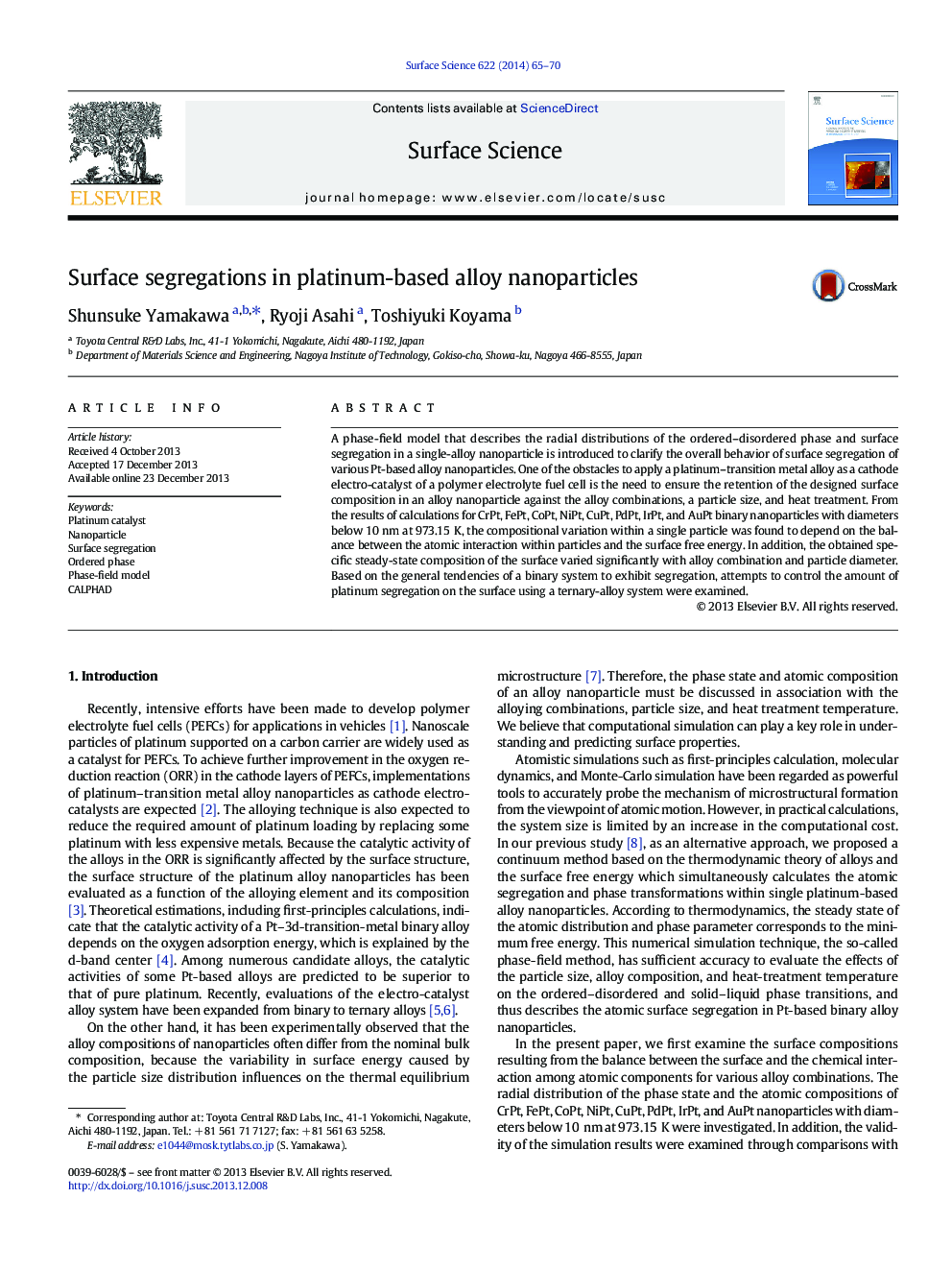| Article ID | Journal | Published Year | Pages | File Type |
|---|---|---|---|---|
| 5422113 | Surface Science | 2014 | 6 Pages |
Abstract
A phase-field model that describes the radial distributions of the ordered-disordered phase and surface segregation in a single-alloy nanoparticle is introduced to clarify the overall behavior of surface segregation of various Pt-based alloy nanoparticles. One of the obstacles to apply a platinum-transition metal alloy as a cathode electro-catalyst of a polymer electrolyte fuel cell is the need to ensure the retention of the designed surface composition in an alloy nanoparticle against the alloy combinations, a particle size, and heat treatment. From the results of calculations for CrPt, FePt, CoPt, NiPt, CuPt, PdPt, IrPt, and AuPt binary nanoparticles with diameters below 10Â nm at 973.15Â K, the compositional variation within a single particle was found to depend on the balance between the atomic interaction within particles and the surface free energy. In addition, the obtained specific steady-state composition of the surface varied significantly with alloy combination and particle diameter. Based on the general tendencies of a binary system to exhibit segregation, attempts to control the amount of platinum segregation on the surface using a ternary-alloy system were examined.
Related Topics
Physical Sciences and Engineering
Chemistry
Physical and Theoretical Chemistry
Authors
Shunsuke Yamakawa, Ryoji Asahi, Toshiyuki Koyama,
